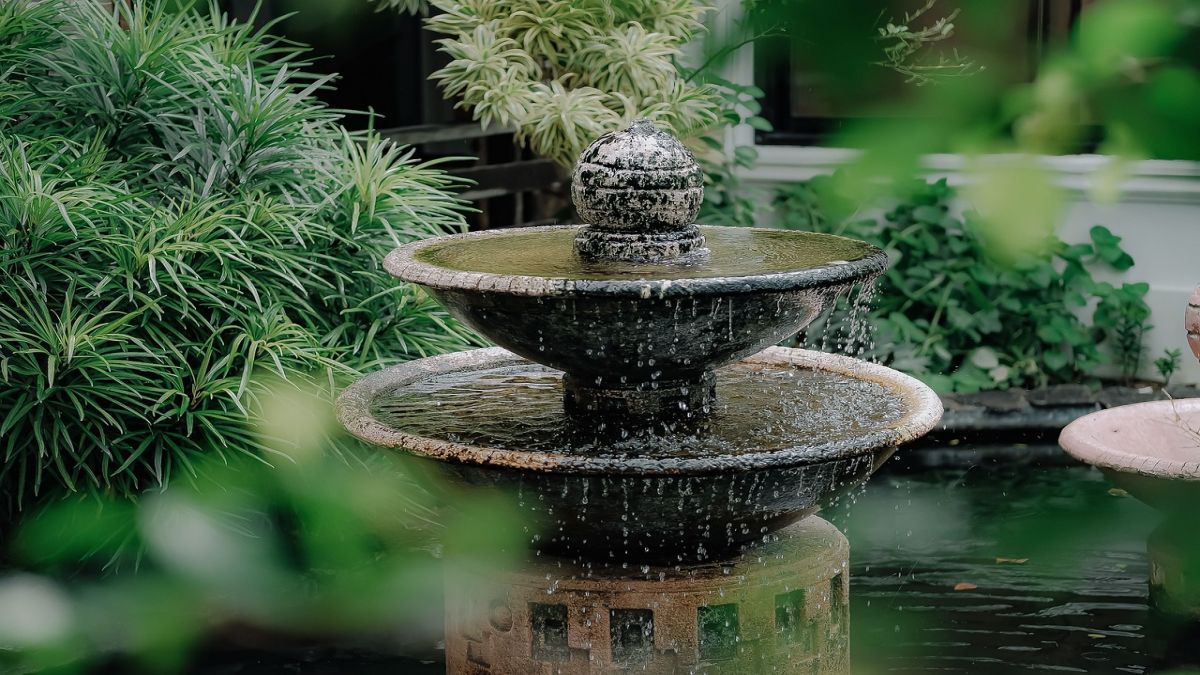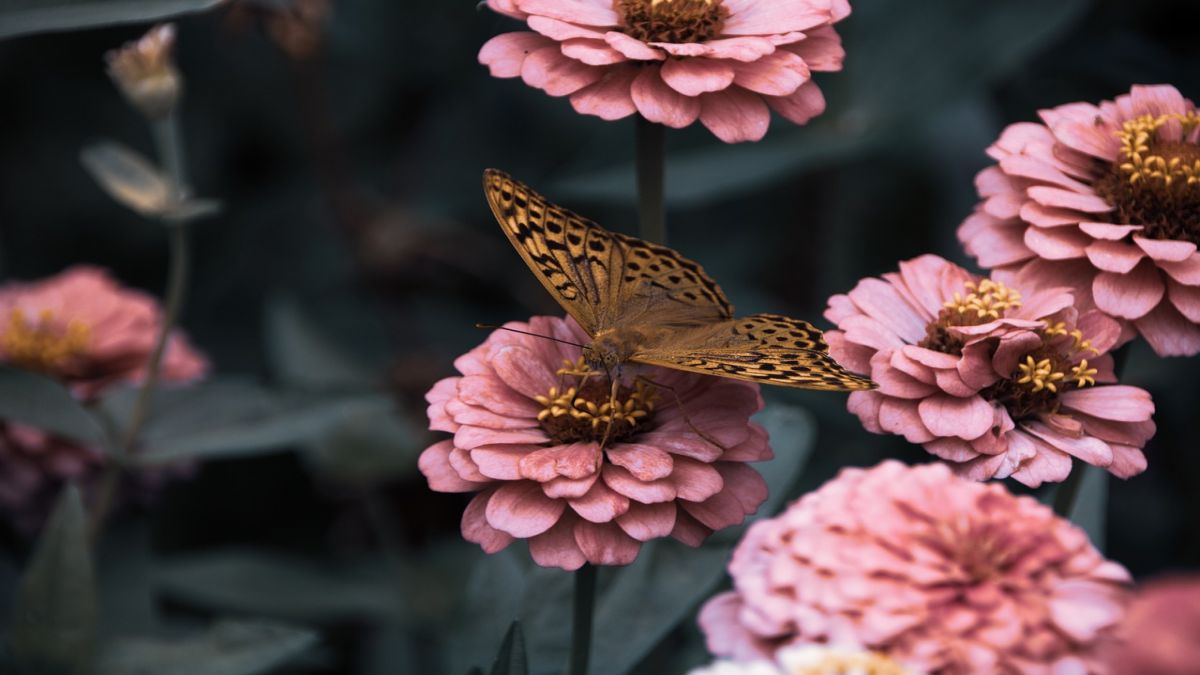Advertisement
Now, you might be thinking, "But won't inviting wildlife mean they'll munch on my prized plants?" Well, fear not! With a sprinkle of know-how and a dash of creativity, we can craft a wildlife-friendly garden that's a paradise for all.
Did you know that studies by the National Wildlife Federation reveal that gardens teeming with native plants can host up to 10 times more wildlife than your average lawn? It's like hosting a grand wildlife party in your own backyard!
So, where do we begin? Let's start with some simple changes that can make a world of difference for our garden residents:
1.Choosing the Right Flowers
Flowers are like a gourmet feast for our garden guests - bees, butterflies, and other pollinators. Skip the fancy, pollen-less blooms and opt for plants that serve up a season-long buffet of pollen and nectar.
From the early risers like Crocus and Mahonia to the late bloomers like Michaelmas daisy and Sedum spectabile, these floral delights keep our winged visitors happy and well-fed all year round. It's like running a 5-star restaurant for our buzzing buddies!
2.Grow a Mix of Trees and Shrubs
Trees, shrubs, and climbers are like the penthouses of the wildlife world, offering food, shelter, and nesting spots.
From the blossoms of rowan and crab apple to the berry bonanzas of elder and hawthorn, these woody wonders provide a banquet for birds and bugs alike.
It's like having a bustling wildlife metropolis right in your garden - complete with feathered tenants and buzzing residents!

3.Add Water
Whether it's a pond or a humble water container, H2O is a magnet for wildlife. A pond, no matter how petite, is a hotspot for creatures big and small, offering a cool oasis on a hot day.
And remember, wildlife prefers the shallow end, so keep it accessible with a gentle slope for easy dips. It's like installing a mini wildlife spa in your garden - complete with a VIP entrance for our critter friends!
4.Embrace Dead Wood
Decaying wood may not win a beauty contest, but it's a treasure trove for specialist wildlife like beetles, grubs, and fungi. These natural hideaways provide shelter, food, and cozy hibernation spots for a host of garden inhabitants.
So, don't rush to tidy up - let that dead wood work its magic in your garden. It's like hosting a woodland retreat for our tiny, six-legged pals!
5.Compost, Compost, Compost
Composting isn't just a gardener's best friend; it's a wildlife wonderland too. By recycling garden waste into nutrient-rich compost, you're throwing a party for decomposer organisms that benefit all living things in your garden.
It's like having a bustling community of tiny recyclers working their magic beneath the soil - nature's own cleanup crew!
In my previous post, I covered how you can make your own compost using simple steps to create a thriving ecosystem in your garden, attracting and protecting wildlife in the process.

Advertisement
6.Provide Food and Water for Birds
Our feathered friends bring life and melody to our gardens, and a little TLC goes a long way in supporting them. From peanuts to sunflower hearts, a well-stocked bird buffet can be a lifesaver, especially during chilly winters.
And don't forget a fresh supply of water - it's like a bird oasis in your backyard, complete with a chirping choir and fluttering guests!
7.Embrace a Tidy Wildness
A garden doesn't need to be perfectly pruned to be beautiful. Piles of leaves, twiggy debris, and wild corners offer food and shelter for a variety of wildlife.
Letting perennials stand tall over winter provides cozy hideouts for insects, while stone piles create secret havens for reptiles and amphibians. It's like creating a wild wonderland in your own backyard - a hidden paradise for our garden guests!
8.Let a Patch of Grass Grow
If a full-scale wildflower meadow isn't your cup of tea, simply letting patches of lawn grow longer can work wonders for wildlife.
These untamed areas provide shelter for small mammals and food for butterfly caterpillars, adding a touch of wild beauty to your garden.
It's like creating a mini wilderness right in your backyard - a green haven for our furry and fluttering friends!

9.Garden Sustainably
Sustainability isn't just a trend; it's a way of life for gardeners who care about wildlife. By minimizing synthetic pesticides, choosing eco-friendly products, and conserving water, we can create a garden that treads lightly on the earth.
It's like gardening in harmony with nature, ensuring a brighter future for all our garden guests!
10.Scatter Wildflower Seeds
Meadows are a haven for wildlife, offering a rich tapestry of grasses and wildflowers. By sowing wildflower seeds, we can recreate these diverse habitats in our own gardens, providing food and shelter for a host of creatures.
It's like painting a canvas of color and life in your backyard - a masterpiece that blooms and buzzes with life!
11.Create a Rock Garden
Rock gardens and gravel beds mimic the rugged beauty of natural habitats, attracting specialized wildlife like mason bees and other pollinators.
These low-maintenance features offer a haven for plants and animals adapted to harsh conditions, adding a touch of wild charm to your garden.
It's like bringing a slice of the wilderness into your own backyard - a rocky retreat for our buzzing buddies!
So, my friend, let's roll out the green carpet for our wildlife guests and create a garden that's not just beautiful but buzzing with life.
By making these small changes, we can transform our outdoor spaces into vibrant ecosystems that support a diverse array of creatures. Let's be the hosts of the ultimate wildlife party, where every critter is welcome, and every bloom is a banquet.
Happy gardening, and may your garden be a thriving sanctuary for all creatures great and small!
Advertisement





